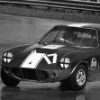It has 5 main bearings as opposed to the stock 3 bearing amongst other exotic engineering. I believe it was one of only a few made in the 1960's by Ian Carter for wonderful Rootes Motorsport at the time.
This one is actually 1200cc and i have a hunch it was used by Peter Harper in his Rally Cross days.
Thing is i am assuming that my friend cannot use this engine for his historic involvement in Oz as the Australian MSA have said it is not a stock item...Bah!
Hence he now has to offload it..Not wanting it as an expensive ornament he/we would like to see it used in any category available .
That is the question - Where ?
I have already had info regarding it is suitable in South Africa. I'm thinking it is useable in Germany with the Nurburgring series..Forgotten what they call it!
Still have to receive all the details of spec and price required for it ,but it did cost multi -thousands of pounds.
It is nothing to do with the Coventry Climax 1200cc Elite and so on engine ..Different physical size altogether.Neither is it based on a fire pump engine.
It was sold last year on ebay ,but my mate cannot find the history lesson that came with it. I for one would like to know all that out of much interest alone. Prior to sale it was refurbished by Ben Boult the Imp worker and is ready for use.
Over to you historians!
Edited by mollykeizer, 27 September 2011 - 18:16.




















